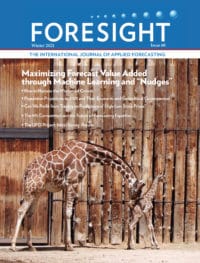
Through the M4 and M5 competitions, we've seen the promising performance of machine learning approaches in generating forecasts. The SAS whitepaper "Assisted Demand Planning Using Machine Learning for CPG and Retail" describes a role for ML in augmenting the demand planning by guiding the review and override of statistical forecasts.




